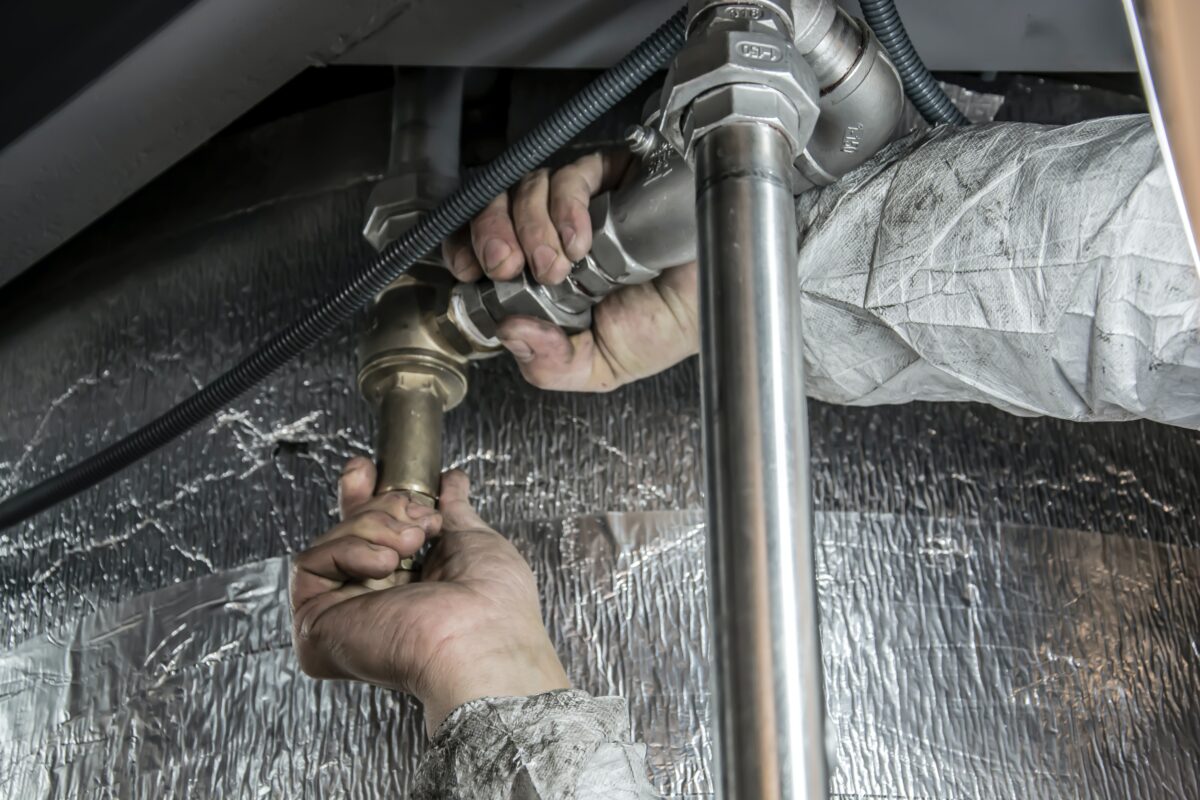How much does a plumber charge to replace a toilet?

Are you wondering how much a plumber will charge to replace your toilet? Well, the answer may surprise you – it could be as low as $200!
Of course, there are many factors that can affect the price, such as the type of toilet you have and the complexity of the job. But if you’re looking for a quick and easy way to get a new toilet installed, then this could be a great option for you.
How much does a plumber charge to replace a toilet?
It depends on the specifics of the job, but a typical charge for a plumber to replace a toilet might be in the range of $200-$300. This would include the cost of labor and materials. If you have any questions about what is included in the estimate, be sure to ask the plumber before they begin work.
Why do you need to replace your toilet?
There are many reasons why you might need to replace your toilet. Maybe your current toilet is outdated and you want to upgrade to a more modern model. Maybe you’re remodeling your bathroom and want a different style of toilet. Or maybe your toilet is simply broken and needs to be replaced.
Whatever the reason, replacing a toilet is not a DIY project. You’ll need to hire a professional plumber to do the job. This guide will help you understand the cost of replacing a toilet so you can budget for the project.
The first thing you need to know is that there are two main types of toilets: gravity toilets and pressure-assisted toilets. Gravity toilets are the most common type of toilet, and they use gravity to flush waste down the drain. Pressure-assisted toilets use air pressure to force waste down the drain, and they typically cost more than gravity toilets.
The second thing you need to know is that there are three main types of plumbing: copper, PVC, and PEX. Copper is the most expensive type of plumbing, but it’s also the most durable. PVC is less expensive than copper, but it’s not as durable. PEX is the least expensive type of plumbing, but it has a shorter lifespan than PVC or copper.
The third thing you need to know is that there are four main types of toilet flushing systems: gravity flushing, pressure-assisted flushing, dual flushing, and tankless flushing. Gravity flushing is the most common type of flushing system, and it uses gravity to flush waste down the drain. Pressure-assisted flushing uses air pressure to force waste down the drain. Dual flushing systems use both gravity and air pressure to flush waste down the drain. Tankless flushing systems don’t have a tank; they flush waste directly down the drain without storing it in a tank first.
Now that you know all this, you’re probably wondering how much it will cost to replace your toilet. The answer depends on a few factors, such as the type of toilet you want (gravity or pressure-assisted), the type of plumbing you have (copper, PVC, or PEX), andthe type of flushing system you want (gravity, pressure-assisted, dual flush, or tankless). To give you an idea of how much it will cost to replace your toilet, we’ve compiled some pricing information from several major retailers below:
How to know when it’s time to replace your toilet
There are a few signs that it might be time to replace your toilet:
-Your toilet is constantly running.
-You have to jiggle the handle to make it stop running.
-There is water on the floor around the toilet.
-The bowl is cracked.
-The seat is cracked.
-The tank is cracked.
Tips for replacing your toilet
If your toilet is starting to show its age, or if it isn’t flushing as efficiently as it used to, it might be time to replace it. This can be a complex and involved project, so it’s important to do your research before you get started. Here are a few things to keep in mind as you plan for your new toilet:
-There are many different types of toilets on the market, so take some time to find the one that’s right for you. Consider factors like cost, efficiency, and style.
-You will need to purchase a few supplies before you get started, including a new toilet bowl, a wax ring, bolts, and a water supply line.
-If you’re not comfortable working with plumbing, it’s best to hire a professional to help you with this project. Plumbers can be expensive, but they will make sure the job is done correctly.
With these tips in mind, you should be well on your way to replacing your old toilet with a new one that will serve you well for years to come!
How to choose the right toilet for your home
There are many factors to consider when selecting a toilet for your home. In addition to style and color, you’ll need to decide which type of toilet will best suit your needs. Toilets can be either gravity-fed or pressure-assisted, and each has its own advantages.
Gravity-fed toilets are the most common type of toilet, and they use the weight of the water to flush the waste away. These toilets are typically less expensive than pressure-assisted toilets, but they may require more frequent flushing in homes with large families or a lot of foot traffic.
Pressure-assisted toilets use a small pump to force water into the bowl, which then flushes the waste away. These toilets are more expensive than gravity-fed models, but they generally require less frequent flushing and may be a good choice for homes with large families or a lot of foot traffic.
How to install a new toilet
If your old toilet is starting to show its age, or if it’s not working properly, it might be time for a new one. Installation is surprisingly easy, and you can do it in a few hours with just a few tools. Here’s how to install a new toilet.
Turn off the water to the toilet. There should be a shut-off valve on the wall behind the toilet. Flush the toilet to empty the tank, then disconnect the water supply line from the tank.
Remove the old toilet. Unscrew the two bolts that attaching the tank to the bowl and lift off the tank. Then, using a putty knife, scrape off any old putty or caulk around the base of the bowl. Next, remove the two bolts that fasten the bowl to the floor and lift off the bowl. If there’s any resistance, you may need to break through any sealant with a putty knife before you can remove it.
Install the new bowl. Place a wax ring on top of the flange (the drain pipe in the floor), then lower the new bowl into place so that it sits on top of the wax ring. Once it’s in place, press down firmly around the base of the bowl to make sure that there’s good contact between the wax ring and both surfaces. If necessary, add or remove shims until everything is level. Finally, use a hacksaw to cut off any bolts that protrude above the surface of The base then screw The base into place using The included bolts and washers .
Install The new tank . Start by attaching The new supply line to The shut-off valve using a wrench , then turn on The water and check For leaks . Next , place The tank onto The bowl , holding it in place with one hand while you insert The bolts that will attach it with The other hand . Use a level to make sure that The tank is level before tightening down The bolts . Finally , connectThe flush handle toThe arm insideThe tank usingThe included hardware
What to do with your old toilet
If you’re planning to replace an old toilet, you may be wondering what to do with the old one. While some people simply throw their old toilets away, this isn’t the most environmentally-friendly option. Here are a few ideas for what to do with your old toilet:
1. Donate it to a local Habitat for Humanity ReStore.
2. See if your local recycling center will take it (some centers accept porcelain toilets).
3. Upcycle it into a planter or garden ornament.
4. Break it up and use it as drainage gravel in your garden.
FAQ’s about replacing toilets
How much does a plumber charge to replace a toilet?
The cost of replacing a toilet will vary depending on the type of toilet you need and the complexity of the installation. Generally, you can expect to pay between $200 and $600 for labor, plus the cost of materials.
10 things you need to know about toilets
1. Toilets are one of the most important fixtures in your home, and they need to be properly maintained in order to function properly.
2. Toilets can be made from a variety of materials, including porcelain, ceramic, and plastic.
3. The most common type of toilet is the gravity-fed toilet, which uses gravity to flush waste away.
4. Toilets can also be pressure-assisted, which means that they use air pressure to help push waste out of the bowl.
5. If your toilet is not flushing properly, it could be because the water level in the bowl is too low.
6. Toilets typically require a minimum of 1.6 gallons per flush to function properly.
7. Most toilets have a wax ring seal that helps to prevent leaks between the bowl and the drain pipe.
8. If your toilet is leaking, it could be because the wax ring seal needs to be replaced.
9. Toilets can also develop clogs, which can be caused by a variety of things including hair, soap scum, and toilet paper buildup.
Why your toilet is important
Your toilet is one of the most important fixtures in your home, and it’s important to keep it in good working order. Not only is a functioning toilet essential for your family’s daily life, but it can also help prevent big problems down the road. A clogged or leaky toilet can cause significant water damage, and repairs can be costly. That’s why it’s important to understand how your toilet works and what you can do to keep it in good shape.



